Rigid-Foldable Geometry
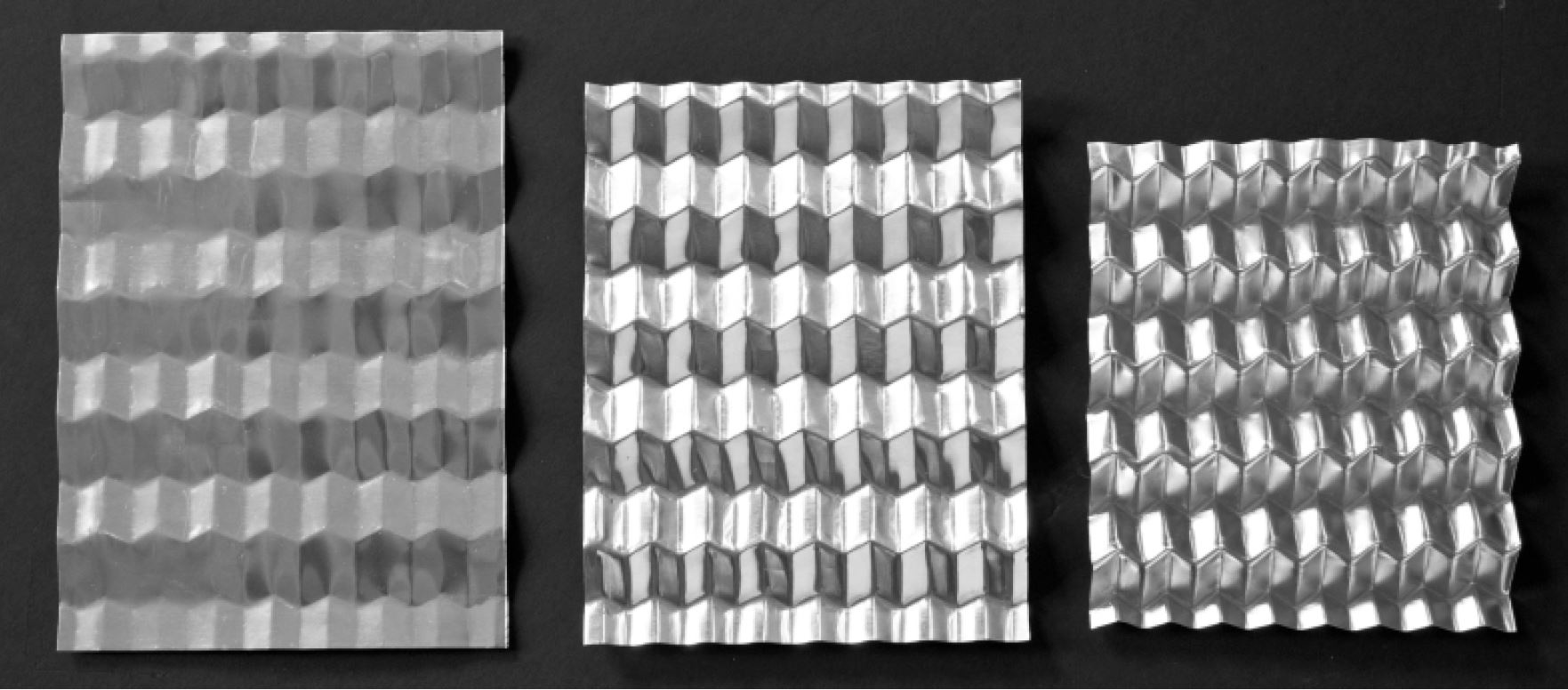
Rigid-foldable origami and kirigami are a select group of patterns that consist of panels that can move continuously between folded states by rotating around crease lines without deformation. This makes them of great use in engineering application, as they can be folded from rigid (non-paper) engineering materials.
Miura-Derivative Geometries
The Miura pattern is a fundamental rigid-foldable pattern that is widely used in engineering, architecture, and design. This research examines the Miura origami pattern and its first-level derivatives, altered by changing one of five characteristics: crease orientation, alignment, developability, flat-foldability, and rectilinearity. By presenting a consistent parameterization for these patterns and constructing physical prototypes for validation, the study clarifies relationships between these patterns and demonstrates how they can be combined into complex geometries. Further information: DOI: 10.1115/1.4025380.
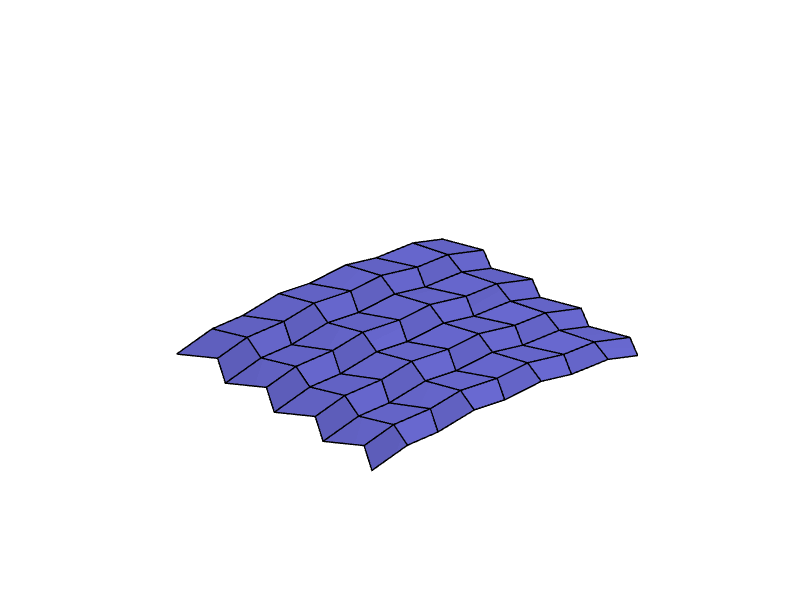
Rigid-Foldable Kirigami
Kirigami patterns are not created from a continuous sheet, but instead may contain slits or punched out portions. They may still be rigid-foldable, with the cube and eggbox patterns being examples of this. Similar to the Miura pattern, they are both foldable with single DOF, are composed of a single repeated plate, and have derivative geometries capable of forming a range of curvatures. Further information: DOI: 10.1260/0266-3511.30.2.99.
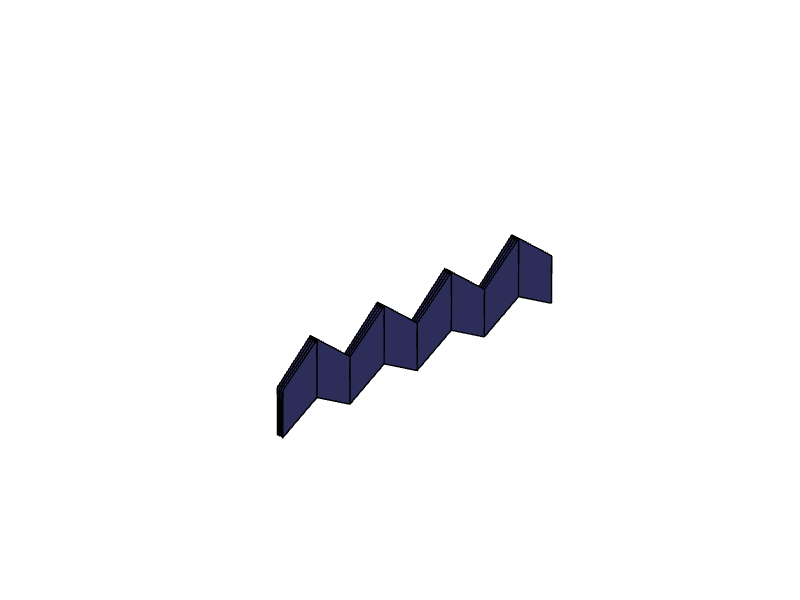
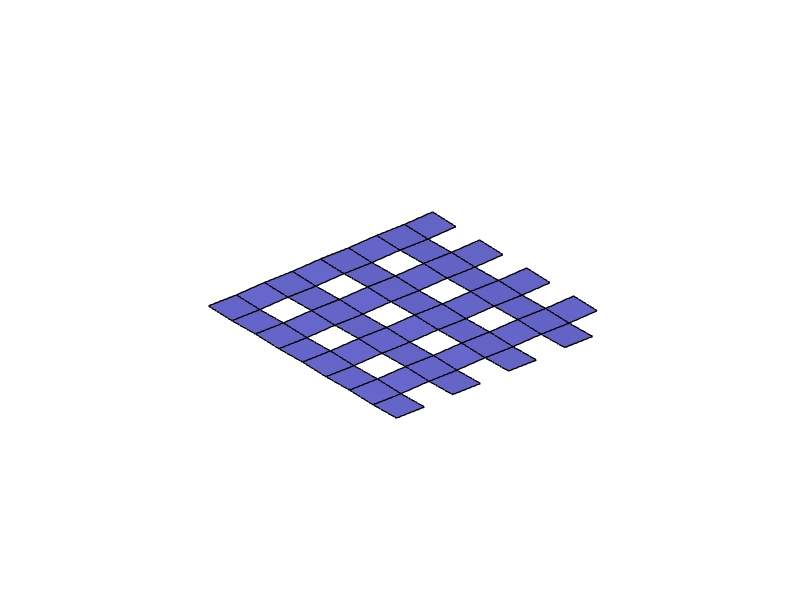
Superimposed Rigid Origami with Multiple States
A new method allows for the superimposition of multiple distinct, rigid-foldable crease patterns on the same sheet, maintaining the kinematic independence and 1-DOF mobility of each pattern. This approach is facilitated by the cross-crease vertex, a special configuration featuring two pairs of collinear crease lines. The method has been applied to compactly fold non-flat-foldable structures and to create sequent folding origami capable of transitioning between multiple states without unfolding, suggesting potential for numerous other applications. Further information: DOI: 10.1038/srep36883.
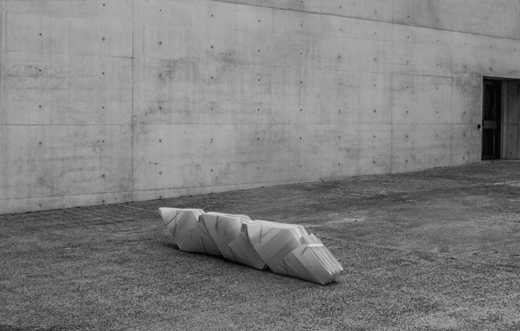
Related Publications
Mukhopadhyay, T., Ma, J., Feng, H., Hou, D., Gattas, J. M., Chen, Y., & You, Z. (2020). Programmable stiffness and shape modulation in origami materials: Emergence of a distant actuation feature. Applied Materials Today, 19. https://doi.org/10.1016/j.apmt.2019.100537
Liu, X., Gattas, J. M., & Chen, Y. (2016). One-DOF superimposed rigid origami with multiple states. Scientific reports, 6, 36883. https://doi.org/10.1038/srep36883
Xie, R., Chen, Y., & Gattas, J. M. (2015). Parametrisation and application of cube and eggbox-type folded geometries. International Journal of Space Structures, 30(2), 99–110. https://doi.org/10.1260/0266-3511.30.2.99
Gattas, J. M., & You, Z. (2013). Rigid-foldable piecewise geometries. In F. Escrig & J. Sanchez (Eds.), New proposals for transformable architecture, engineering, and design. Proceedings of the first conference transformables 2013. School of architecture seville, spain (pp. 319–324). Editorial Starbooks.
Gattas, J. M., Wu, W., & You, Z. (2013). Miura-base rigid origami: Parameterizations of first-level derivative and piecewise geometries. Journal of mechanical design, 135(11), 111011. https://doi.org/10.1115/1.4025380